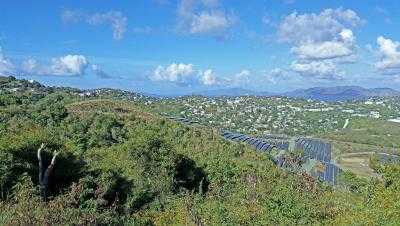46 solar boats competed in 2011 Solar Cup
 The Metropolitan Water District of Southern California and local water agencies saw 46 regional high schools compete in the ninth annual Solar Cup challenge, The competition challenges high schoolers to build and race solar-powered boats on Metropolitan’s Lake Skinner reservoir. The competition is funded by the water district to raise awareness of both solar power and water conservation.
The Metropolitan Water District of Southern California and local water agencies saw 46 regional high schools compete in the ninth annual Solar Cup challenge, The competition challenges high schoolers to build and race solar-powered boats on Metropolitan’s Lake Skinner reservoir. The competition is funded by the water district to raise awareness of both solar power and water conservation.
Don’t expect these one-man boats to take on the Turanor PlanetSolar, the first solar-powered boat to traverse the Pacific Ocean on the sun’s power, or don’t expect them to take on cigarette boats any time soon. Their top-speed is about 15 miles an hour, according to Julie Miller, Metropolitan’s Solar Cup coordinator. “In past years its been about 13 or 15 miles an hour. It’s very rarely 15,” she said. But the competition is the largest in which high school teams compete to build and race solar-powered boats in rookie and veteran divisions.
The competition was formed after a former general manager of Metropolitan saw a similar collegiate event, according to Miller. “He thought we could do this on our reservoir with high school kids and that’s where it came from,” she said.
This year’s winners were veterans Savanna High School in Anaheim and rookies Oak Park High School in Oak Park. But there were some other things afoot that showed the competitive yet friendly nature of the race. For instance a team from Long Beach Polytechnic high school had issues with their battery pack. “They fried both the batteries for the sprint race. Another team had an extra set and let Long Beach use them.…It’s not just about my team beating your team its about [making sure everyone can participate],” Miller said.
Each team is subject to some of the same conditions, Metropolitan supplies each team with an identical plywood watercraft kit. “Everybody has to use the same hull.…They have to choose the motor, battery and solar panels,” Miller said. “They [i.e., the boats] can only have a maximum output of 320 watts on the solar panels,” she said. In addition, the battery weight is limited to 55 pounds.
Returning teams receive $2,500 to support the costs of building the craft and any other materials needed. “Rookie” teams get $4,000 to cover the costs of photovoltaics and other costs, according to Miller.
The water district chose to hold the competition for a number of reasons. “One of the main reasons is it promotes clean energy technology on a drinking-water reservoir. We’re kind of introducing students to solar energy and another green technology which would make our drinking water cleaner,” Miller said. “Probably the bigger goal now for the district is workforce development. Public agencies have so many baby boomers that are going to retire, that…workforce development has become a high priority for Metropolitan.”
Image of California Academy of Math and Science's boat comes courtesy of the Metropolitan Water District of Southern California



